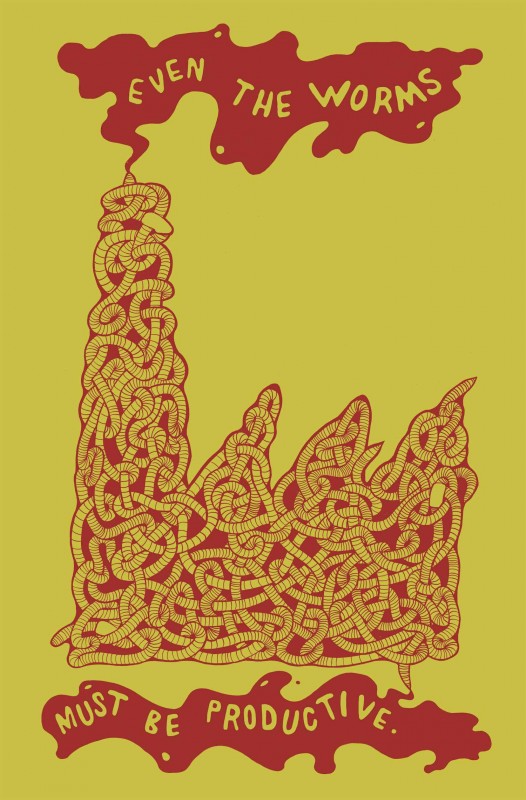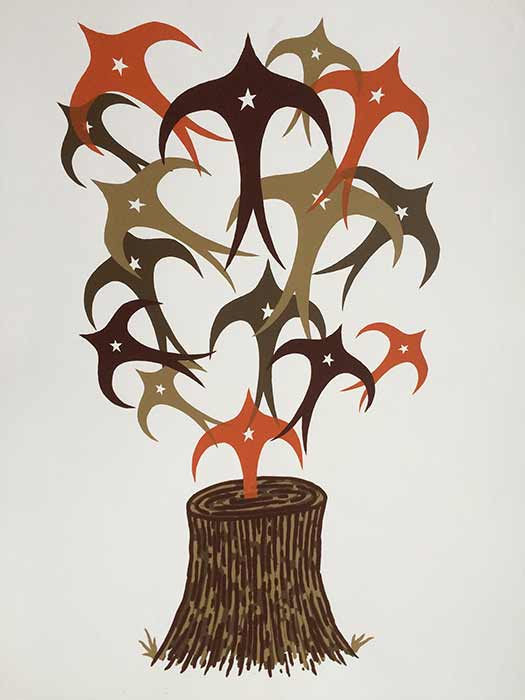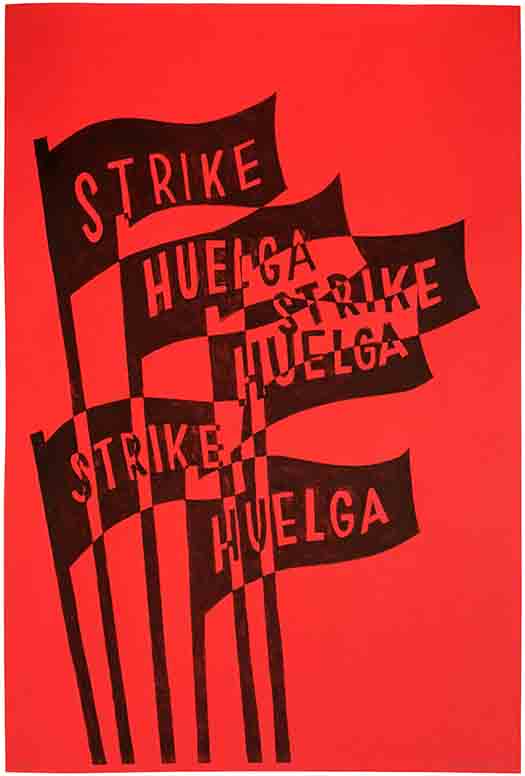
Every society has its pecking order, and printing is no exception. Equipment matters. At the top of the heap are the big presses—the giant Goss web machines that churn out daily newspapers, the high-speed Solna sheetfeds for beautiful color posters, the elegant Heidelberg Windmill letterpresses for art prints. At the bottom are the lowly duplicators—not even called presses—that are the Volkswagen Bugs of the reproduction world. People of a certain age might remember the two offset workhorses of this stratum, the A.B. Dick 360 and the Multilith 1250. But even below these machines, at the very dark recesses of the reproduction food chain, lie the spirit duplicators and mimeographs. . . .
Among the first to experiment with the artistic possibilities of these machines was the Communication Company (Com/Co, or CC), founded in San Francisco’s Haight-Ashbury district by Chester Anderson and Claude Hayward in January 1967. This was the epicenter of the new counterculture, and every movement needs a medium. . . .
Read the rest of the article, and check out a dozen other images, on the AIGA website HERE. The image to the left is “My name is Assata Shakur and I am a revolutionary—a Black revolutionary” by Miranda Bergman, 1977, printed by Jane Norling. (courtesy Jane Norling)








Thanks for the plug, Josh, but it’s not photocopying (a process that uses electrostatic imaging and powder toner). It’s closer to a mechanized version of screenprinting, since ink got pushed through a stencil.